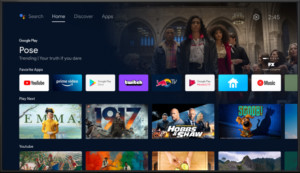The Rise of Cable Television in the 1980s
The 1980 Television landscape underwent a dramatic transformation with the unprecedented growth of cable television. Prior to this decade, the “Big Three” networks—ABC, CBS, and NBC—held a near monopoly over American viewers. However, the advent of cable technology, delivering a wider array of channels directly into homes via coaxial cable, disrupted this established order. This article will explore the rapid expansion of cable television during the 1980s and its impact on the television industry.
From Community Antenna to National Phenomenon
Initially known as “community antenna television,” cable’s origins lay in providing television signals to areas with poor reception. A centrally located antenna would capture signals and distribute them to homes via wire for a fee. While attempts to expand cable’s reach in the 1960s met with resistance, the 1970s saw cable providers offering unique programming unavailable on network television. A pivotal moment arrived in 1972 when Home Box Office (HBO) began offering subscribers uncut, commercial-free movies, often long before their edited broadcast premieres.
The Cable Boom and Network Decline
This innovative programming proved a game-changer. In 1970, only 8% of American households subscribed to basic cable. By 1980, that figure had risen to 23%, doubling again by 1984. By the decade’s end, nearly 60% of American homes had cable, with almost half subscribing to premium channels. The networks felt the impact. Their prime-time audience share plummeted from over 90% in the late 1970s to 67% by 1989, continuing its decline throughout the 1990s. Even independent stations, unaffiliated with the major networks, gained ground.
A Fragmented Audience and the Rise of Niche Programming
Cable’s success stemmed from its ability to cater to diverse interests. Specialized channels like Nickelodeon (children), ESPN (sports), HBO and Showtime (movies), Lifetime (women), and CNN (news) emerged, fragmenting the once unified television audience. Viewers in some cities suddenly had access to 50 channels instead of the traditional 3-5. This explosion of choice, coupled with the increasing popularity of remote controls, transformed television viewing into a more active experience.
The VCR Revolution and Personalized Viewing
The 1980s also witnessed the rise of the videocassette recorder (VCR). VCR ownership soared from 1% to 68% during the decade, empowering viewers to record shows and watch them at their convenience. This, along with a rise in household TV ownership, shifted viewing habits away from the traditional family gathering around a single set towards more individualized consumption. Multiple televisions within a home became commonplace, allowing family members to pursue their own viewing preferences.
Conclusion: 1980s Television – A Watershed Moment
The 1980s marked a pivotal era for television. The rapid growth of cable, the introduction of niche programming, and the普及 of VCRs fundamentally altered how Americans consumed television. The once dominant network television landscape was forever changed, ushering in an era of greater choice, control, and personalized viewing experiences. The legacy of this transformation continues to shape the television industry today.








